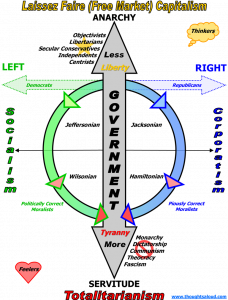 Another Prescient Book
Another Prescient Book
I just read chapter one of a book that was written a year ago, before all of the financial shenanigans last fall. “Entitled The Collapse of the Dollar and How to Profit From It,” it was prescient indeed:
But as the century ended, so did this extraordinary run. Tech stocks crashed, the Twin Towers fell, and Americans’ sense of omnipotence went the way of their nest eggs. As this is written in early 2008, three million fewer Americans are drawing paychecks. The federal government is borrowing $500 billion each year to finance the war on terror as well as an array of new or expanded social programs, and many parts of the financial system, including sub-prime mortgages, credit insurance, and municipal bonds, seem to be imploding.
The dollar, meanwhile, has become the world’s problem currency, falling in value versus other major currencies and plunging versus gold. The whole world is watching, scratching its collective head, and wondering what has changed. The answer, as will become clear in the next few chapters, is that everything has changed, and nothing has. The spectacular growth of the past two decades, it now turns out, was a mirage generated by the smoke and mirrors of rising debt and the willingness of the rest of the world to accept a flood of new dollars. Just how much the U.S. owes will shock you. But even more shocking is the fact that we’re still at it. Like a family that has maintained its lifestyle by maxing out a series of credit cards, America is at the point where new debt goes to pay off the old rather than to create new wealth. Hence the past few years’ slow growth and steady loss of jobs.
So why say that nothing has changed? Because today’s problems are new only in terms of recent U.S. history. A quick scan of world history reveals them to be depressingly familiar. All great societies pass this way eventually, running up unsustainable debts and printing (or minting) currency in an increasingly desperate attempt to maintain the illusion of prosperity. And all, eventually, find themselves between the proverbial devil and deep blue sea: Either they simply collapse under the weight of their accumulated debt, as did the U.S. and Europe in the 1930s, or they keep running the printing presses until their currencies become worthless and their economies fall into chaos.
This time around, governments the world over have clearly chosen the second option. They’re cutting interest rates, boosting spending, and encouraging the use of modern financial engineering techniques to create a tidal wave of credit. And history teaches that once in motion, this process leads to an inevitable result: Fiat (i.e., government-controlled) currencies will become ever less valuable, until most of us just give upon them altogether. These are strong words, we know. But by the time you’ve finished the next two chapters we think you’ll agree that they are, unfortunately, quite accurate.
I bet a whole lot of folks wish they had read and heeded this book before last fall. The key word is “heeded.” I was saying similar things on another forum last summer and nobody wanted to hear it, much less act on it. I am the only one I know who has not lost a dime during recent events. â—„Daveâ–º
